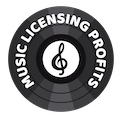Music is a universal language that connects people across the world, transcending cultural and linguistic barriers. For independent artists looking to make their mark in the music industry, getting noticed can be an uphill battle. Fortunately, music licensing has provided a new platform for these artists to showcase their talent, reach a wider audience and make a name for themselves in the industry.
Music licensing involves the use of music in various media productions, such as movies, TV shows, commercials, video games, and more. Independent artists can leverage music licensing as a way to generate revenue and gain exposure. Here are some success stories of independent artists who have made it big by licensing their music.
The first success story is that of 25-year-old singer-songwriter, Ingrid Michaelson. In 2006, she independently released her debut album, “Slow the Rain,” and began licensing her music to various TV shows and commercials. Her music caught the attention of Grey’s Anatomy creator, Shonda Rhimes, who used her song, “Keep Breathing,” in a pivotal scene of the show. This exposure led to Michaelson’s music being featured in several other TV shows, and her song “The Way I Am” became a top 40 hit. Today, Michaelson has released several successful albums and has over 1.3 million monthly listeners on Spotify.
Another independent artist who leveraged music licensing to success is American rapper, Watsky. After releasing his debut album in 2009, Watsky began licensing his music to various commercials and TV shows, including a Verizon commercial and the ABC show, “Castle.” He also gained exposure through YouTube, where his spoken-word poetry videos went viral. In 2013, Watsky’s album, “Cardboard Castles,” debuted at number 76 on the Billboard 200 chart, and he has since released several successful albums and tours around the world.
The third success story is that of British indie-pop band, The 1975. After independently releasing their debut album in 2013, the band began licensing their music to various TV shows, including the MTV series, “Catfish.” In 2016, their second album, “I Like It When You Sleep, for You Are So Beautiful Yet So Unaware of It,” debuted at number one on the UK and US charts, and the band has since won several awards, including the Brit Award for Best British Group.
These success stories are just a few examples of how independent artists can use music licensing to gain exposure and generate revenue. In addition to TV shows and commercials, music licensing can also provide opportunities for independent artists to have their music featured in movies, video games, and other media productions.
One of the key benefits of music licensing is that it allows independent artists to retain ownership of their music while still receiving compensation for its use. This means that artists can continue to create and release music on their own terms, while also benefiting from the exposure and revenue generated through licensing.
Music licensing has provided independent artists with a new platform to showcase their talent and gain recognition in the music industry. The success stories of artists like Ingrid Michaelson, Watsky, and The 1975 demonstrate the power of music licensing to open doors and create opportunities for emerging artists. With the increasing demand for music in various media productions, there has never been a better time for independent artists to explore the possibilities of music licensing and take their career to the next level.
Discover Where The Money’s Hiding in the Music Business, in 2023

